Assaf Eisenman
Jack
The Llama 3 Herd of Models
Jul 31, 2024Abstract:Modern artificial intelligence (AI) systems are powered by foundation models. This paper presents a new set of foundation models, called Llama 3. It is a herd of language models that natively support multilinguality, coding, reasoning, and tool usage. Our largest model is a dense Transformer with 405B parameters and a context window of up to 128K tokens. This paper presents an extensive empirical evaluation of Llama 3. We find that Llama 3 delivers comparable quality to leading language models such as GPT-4 on a plethora of tasks. We publicly release Llama 3, including pre-trained and post-trained versions of the 405B parameter language model and our Llama Guard 3 model for input and output safety. The paper also presents the results of experiments in which we integrate image, video, and speech capabilities into Llama 3 via a compositional approach. We observe this approach performs competitively with the state-of-the-art on image, video, and speech recognition tasks. The resulting models are not yet being broadly released as they are still under development.
High-performance, Distributed Training of Large-scale Deep Learning Recommendation Models
Apr 15, 2021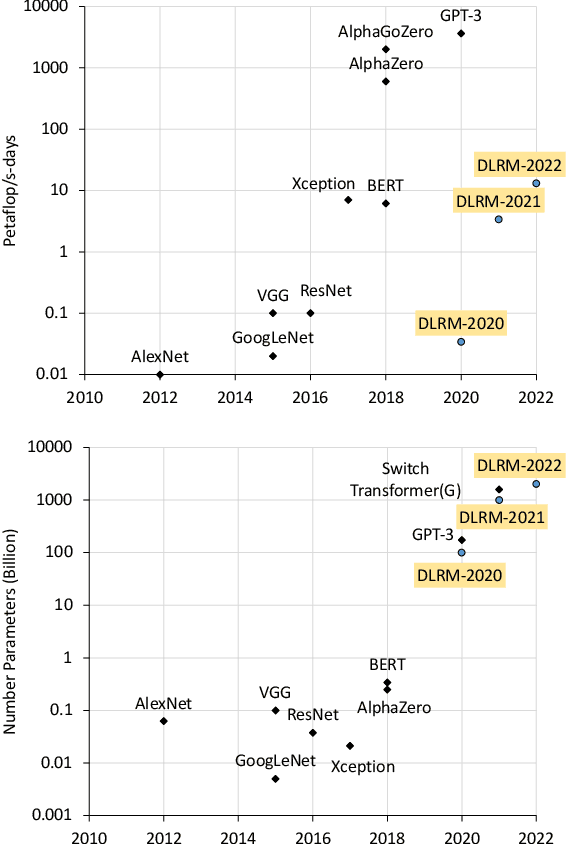
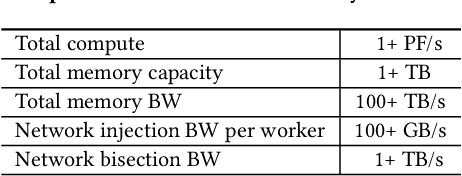
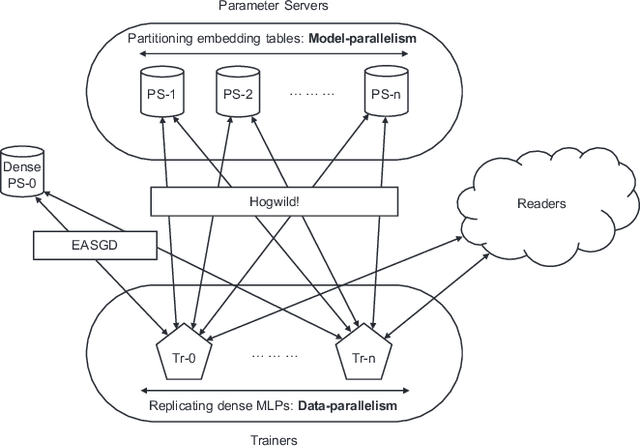
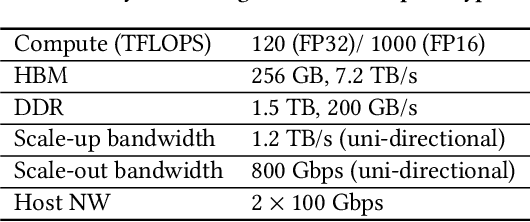
Abstract:Deep learning recommendation models (DLRMs) are used across many business-critical services at Facebook and are the single largest AI application in terms of infrastructure demand in its data-centers. In this paper we discuss the SW/HW co-designed solution for high-performance distributed training of large-scale DLRMs. We introduce a high-performance scalable software stack based on PyTorch and pair it with the new evolution of Zion platform, namely ZionEX. We demonstrate the capability to train very large DLRMs with up to 12 Trillion parameters and show that we can attain 40X speedup in terms of time to solution over previous systems. We achieve this by (i) designing the ZionEX platform with dedicated scale-out network, provisioned with high bandwidth, optimal topology and efficient transport (ii) implementing an optimized PyTorch-based training stack supporting both model and data parallelism (iii) developing sharding algorithms capable of hierarchical partitioning of the embedding tables along row, column dimensions and load balancing them across multiple workers; (iv) adding high-performance core operators while retaining flexibility to support optimizers with fully deterministic updates (v) leveraging reduced precision communications, multi-level memory hierarchy (HBM+DDR+SSD) and pipelining. Furthermore, we develop and briefly comment on distributed data ingestion and other supporting services that are required for the robust and efficient end-to-end training in production environments.
Check-N-Run: A Checkpointing System for Training Recommendation Models
Oct 17, 2020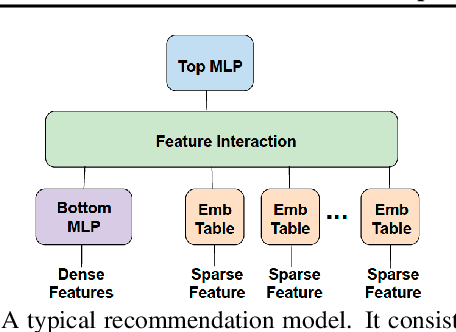
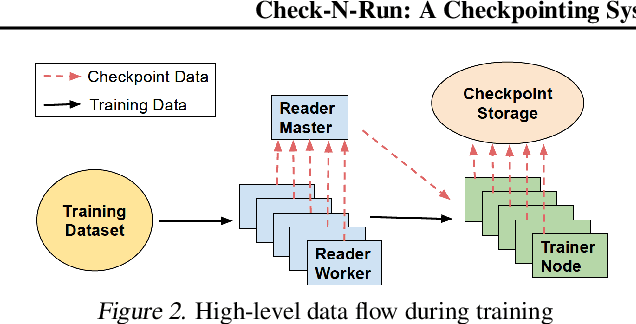
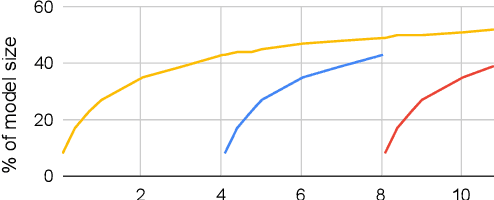
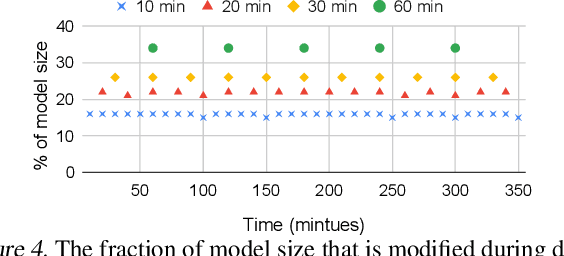
Abstract:Checkpoints play an important role in training recommendation systems at scale. They are important for many use cases, including failure recovery to ensure rapid training progress, and online training to improve inference prediction accuracy. Checkpoints are typically written to remote, persistent storage. Given the typically large and ever-increasing recommendation model sizes, the checkpoint frequency and effectiveness is often bottlenecked by the storage write bandwidth and capacity, as well as the network bandwidth. We present Check-N-Run, a scalable checkpointing system for training large recommendation models. Check-N-Run uses two primary approaches to address these challenges. First, it applies incremental checkpointing, which tracks and checkpoints the modified part of the model. On top of that, it leverages quantization techniques to significantly reduce the checkpoint size, without degrading training accuracy. These techniques allow Check-N-Run to reduce the required write bandwidth by 6-17x and the required capacity by 2.5-8x on real-world models at Facebook, and thereby significantly improve checkpoint capabilities while reducing the total cost of ownership.
Bandana: Using Non-volatile Memory for Storing Deep Learning Models
Nov 15, 2018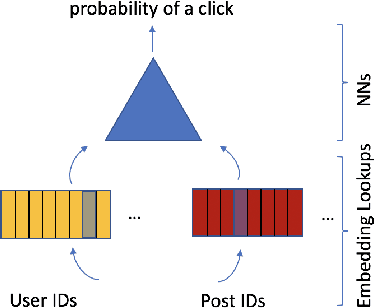
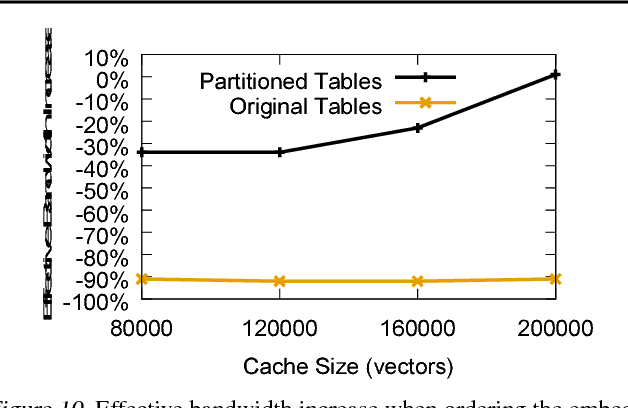

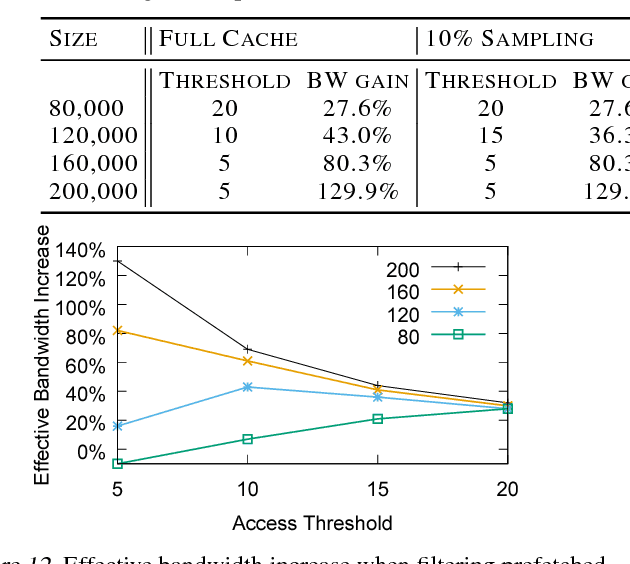
Abstract:Typical large-scale recommender systems use deep learning models that are stored on a large amount of DRAM. These models often rely on embeddings, which consume most of the required memory. We present Bandana, a storage system that reduces the DRAM footprint of embeddings, by using Non-volatile Memory (NVM) as the primary storage medium, with a small amount of DRAM as cache. The main challenge in storing embeddings on NVM is its limited read bandwidth compared to DRAM. Bandana uses two primary techniques to address this limitation: first, it stores embedding vectors that are likely to be read together in the same physical location, using hypergraph partitioning, and second, it decides the number of embedding vectors to cache in DRAM by simulating dozens of small caches. These techniques allow Bandana to increase the effective read bandwidth of NVM by 2-3x and thereby significantly reduce the total cost of ownership.
 Add to Chrome
Add to Chrome Add to Firefox
Add to Firefox Add to Edge
Add to Edge